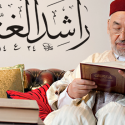FOREWORD
During the last decade, Islamist movements have established themselves as major political players in the Middle East. Together with the governments, Islamist movements, moderate as well as radical, will determine how the politics of the region unfold in the foreseeable future. They have shown the ability not only to craft messages with widespread popular appeal but also, and most importantly, to create organizations with genuine social bases and develop coherent political strategies. Other parties, by and large, have failed on all accounts.
The public in the West and, in particular, the United States, has only become aware of the importance of Islamist movements after dramatic events, such as the revolution in Iran and the assassination of President Anwar al-Sadat in Egypt. Attention has been far more sustained since the terrorist attacks of September 11, 2001. As a result, Islamist movements are widely regarded as dangerous and hostile. While such a characterization is accurate regarding organizations at the radical end of the Islamist spectrum, which are dangerous because of their willingness to resort to indiscriminate violence in pursuing their goals, it is not an accurate characterization of the many groups that have renounced or avoided violence. Because terrorist organizations pose an immediate threat, however, policy makers in all countries have paid disproportionate attention to the violent organizations.
It is the mainstream Islamist organizations, not the radical ones, that will have the greatest impact on the future political evolution of the Middle East. The radicals’ grandiose goals of re-establishing a caliphate uniting the entire Arab world, or even of imposing on individual Arab countries laws and social customs inspired by a fundamentalist interpretation of Islam are simply too far removed from today’s reality to be realized. This does not mean that terrorist groups are not dangerous—they could cause great loss of life even in the pursuit of impossible goals—but that they are unlikely to change the face of the Middle East.
Mainstream Islamist organizations are generally a different matter. They already have had a powerful impact on social customs in many countries, halting and reversing secularist trends and changing the way many Arabs dress and behave. And their immediate political goal, to become a powerful force by participating in the normal politics of their country, is not an impossible one. It is already being realized in countries such as Morocco, Jordan, and even Egypt, which still bans all Islamist political organizations but now has eighty-eight Muslim Brothers in the Parliament. Politics, not violence, is what gives mainstream Islamists their influence.
Mainstream Islamist movements, for the purpose of this paper, are those that have eschewed or formally renounced violence and are pursuing their goals through peaceful political activity. This is a minimalist definition, and it makes no assumptions about what such Islamists truly believe. It does not assume that these movements are genuinely committed to democracy, that they have given up on the goal of making the sharia, or Islamic law, the basis for all laws, or that they truly accept equal rights for women. We have deliberately chosen this minimalist definition as the starting point of a project that seeks to clarify the beliefs, ultimate goals, and strategies of these nonviolent movements.
Among the Arab Islamist organizations committed to peaceful activity, the following parties and movements deserve our attention : Morocco’s Parti de la Justice et du Developpement (PJD), Egypt’s Muslim Brotherhood and Al-Wasat (Center) Party, Yemen’s Islah (Reform) Party, Jordan’s Islamic Action Front, Kuwait’s Islamic Constitutional Movement, and Bahrain’s al-Wefaq [Concordance] Society. Other Islamist parties that have run in elections—the Supreme Council for the Islamic Revolution in Iraq, the Al-Da`wa and Iraqi Islamic Parties, Hizbullah in Lebanon, and Hamas in Palestine—show strong evidence of involvement in the debates and trends discussed here but are not included extensively in this analysis because they lack one or both of the attributes of eschewing violence and participating in an established political system.
The Carnegie Endowment for International Peace of Washington, D.C., and the Istituto Affari Internazionali of Rome (IAI), Italy, in partnership with the Herbert-Quandt-Stiftung, the foundation of ALTANA AG in Germany and with the support of the German Marshall Fund of the United States and the Arab-Italian Chamber of Commerce, held a meeting in Rome in November 2005 with representatives of mainstream Islamists groups from Arab countries. Two days of discussion between analysts from the three Western organizations and regional activists revealed the Islamists’ continuing ambiguity about a number of crucial issues regarding democracy and human rights. We refer to these issue areas about which the thinking of Islamist groups is unclear as “gray zones.” This paper does not purport to be a summary of the discussions that took place during the Rome meeting ; rather, it represents the authors’ own assessment of the gray areas those discussions revealed. It also draws on other conversations with mainstream Islamists by members of the Carnegie team as well as on the writing by a variety of groups and individuals. We focus on six gray zones : Islamic law, violence, pluralism, civil and political rights, women’s rights, and religious minorities.
The existence of such gray zones could be construed as the result of duplicity, a deliberate refusal by mainstream Islamist movements to declare what they really think about key sensitive issues in order not to alarm the West and lose their reputation as moderates. But the existence of gray zones can also be explained by the ongoing development in the thinking and strategies of Islamists as well as ongoing contests within each group over the proper direction for their movement. Mainstream Islamist movements may be less than candid about their goals, but analysts who have followed these issues closely over the years, have read their writings, and had earlier conversations with Islamist groups, have no doubt that there has been a real evolution in their thinking.
The Rome meeting and this analysis of it are seen by Carnegie, IAI and the Herbert-Quandt-
Siftung as the beginning of a process to understand the position of mainstream Islamists. Because mainstream Islamist organizations are so important politically, it is crucial to understand the positions they take as well as to follow closely the evolution in the thinking of the various groups.
The rise and evolution of islamist movements
In today’s Arab world, Islamists have assumed the role once played by national liberation movements and leftist parties. They are the mass movements of the twenty-first century. They are well embedded in the social fabric, understand the importance of good organization, and are thus able to mobilize considerable constituencies. Their ideology prescribes a simple solution to the persistent crises of contemporary Arab societies—a return to the fundamentals, or true spirit, of Islam. Indeed, “Islam is the solution” has been the longtime slogan of Egypt’s Muslim Brotherhood. Like all successful movements, Islamists have been able to distill a long, complex philosophical tradition into simple slogans that have quickly supplanted the Pan-Arabism and socialism that dominated the region until the 1970s. As a result, in most countries Islamists represent the only viable opposition forces to existing undemocratic regimes.
The rise of Islamist movements has become a matter of great concern for secular Arabs and Western governments, who are suspicious of their ultimate goals, and for Arab governments fearful of the growing power of any movement they have trouble controlling. Mainstream Islamist movements discussed in this paper—the so-called moderate movements—have all renounced violence and chosen to advance their goals through political means. As a result, they have become ardent advocates of democracy because they cannot be successful politically in a closed, authoritarian political system. In some countries, their embrace of nonviolence and democracy is a recent development ; fears persist that the change is purely the result of expediency and that these movements would revert to their true, radical nature if they gained power.
Some of the movements have deep historical roots dating back to the beginnings of the twentieth century. The first organization, the Egyptian Muslim Brotherhood, was established in 1928. In the 1950s and 1960s, similar movements began in other countries. By the late 1970s, they were clearly important political players in many different Arab states. At that time, they pursued the twin objectives of establishing an Islamic state and immediately implementing the sharia. But these goals proved unattainable and gradually gave way to more moderate goals and a more pragmatic view of politics. The reality of regime repression led to a split among Islamist movements. The minority turned to terrorism, at home and abroad. The majority renounced violence and focused on creating grassroots networks to organize popular support. Democracy and human rights, which Islamists used to eye suspiciously as Western ideas inapplicable to Arab societies, found their way into the rhetoric of mainstream Islamist organizations and, most importantly, in their political strategies.
Political participation, especially in elections, became a priority for Islamist movements. In countries that allowed the formation of legal Islamic parties (Morocco and Jordan), such parties established a strong presence in the parliaments. In many countries that continued to ban the legal participation of Islamist organization (Egypt), or even forced them into exile (Tunisia, Syria), Islamist opposition movements also emerged as strong voices advocating democracy and political participation.
The Islamist opposition movements to which we have referred so far, and on which this paper
focuses, constitute only one category of nonviolent Islamic organizations playing a political role in many Arab countries today. The other categories comprise what can be called the Islamic establishment of many countries ; that is, the complex of Islamic organizations, clerics, and institutions close to the government. An Islamic religious establishment exists in most countries, but it is particularly important in Saudi Arabia and Egypt. The Wahhabi establishment in Saudi Arabia is an integral part of the power structure, and the royal family has ceded it control over most social and educational issues, to the point where it is virtually impossible in the country for a child to attend a nonreligious school or for a woman to enjoy even a minimum level of personal freedom away from the tutelage of the family. The religious establishment in Egypt is equally powerful. The official religious institutions of Egypt, centering around Al-Azhar University, have expanded their influence in the last decade, exercise censorship on publications, and have contributed to making Egypt a socially more conservative society than it had been for a long time. No matter how powerful, however, the official Islamic institutions of Arab countries have so far not been a source of political change. Rather, they have been content to leave the political sphere to the government, extending their influence on the social sphere instead. The rise of moderate, nonviolent Islamist movements seeking a role in the political sphere while also extending their influence on the social sphere is thus a challenge to both governments and Islamic establishments, although there are some indications that religious establishments and Islamist parties are beginning to draw closer in some countries.





In terms of bonalnoy erudition – grammotno done!